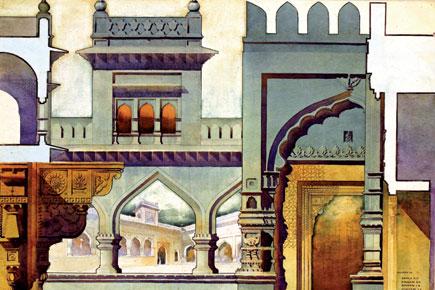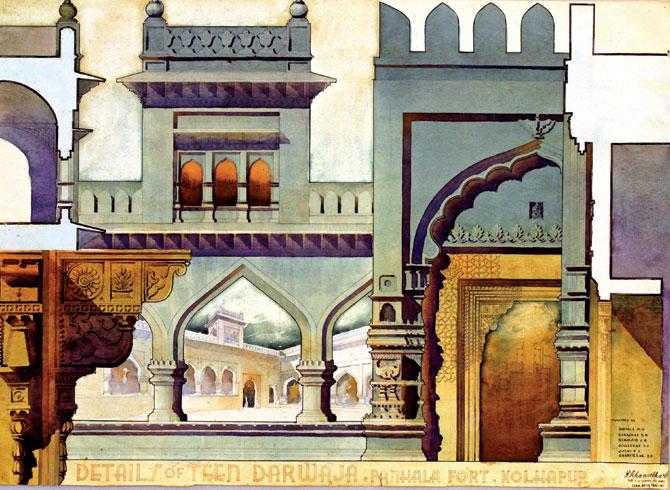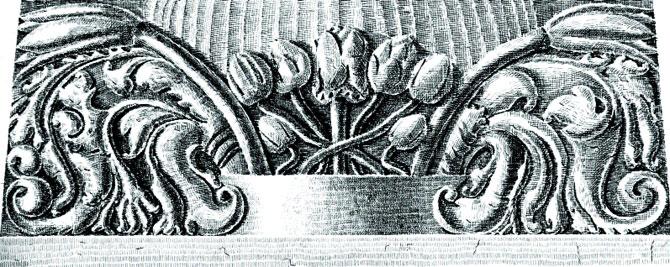An exhibition of drawings by architecture students from the late 1800s to 1940s, traces the design and detail of traditional and modern Indian structures

Kolhapuru00c3u00a2u00c2u0080u00c2u0099s Teen Darwaza by R Khanvilkar (1941)
"As we pored over the designs from the 1930s and '40s, it was interesting to note that these students (Sir JJ School of Architecture) were at ease while creating traditional as well as modern designs. It's a fine example of their confidence," shares professor Mustansir Dalvi, Sir JJ School of Architecture.

Kolhapur's Teen Darwaza by R Khanvilkar (1941)
ADVERTISEMENT
He has curated The Past as Present: Pedagogical Practices in Architecture at the Bombay School of Art, an exhibition that will introduce the viewer to the influences, documentation and rich archival content from the Sir JJ School of Art, Bombay, focusing on drawings of architectural monuments from the 1890s all the way till the 1940s from across India.
"We intend to show how people learnt architectural traditions in the late 19th century and early 20th century. All the work is by the students," informs Dalvi, adding that one can look out for designs by noted artists including DK Mhatre, Samuel Fyzee Rahamin, Janardhan Shastri, Vanu Bhuta, Mohammad Abdul Ahed, Achyut Kanvinde and
MV Dhurandhar (he headed the School of Art).
The exhibition will showcase drawings from not just Mumbai but also Bijapur, Ahmedabad and Ellora, as well laster-day drawings of sites across India. Kanvinde comes in for special mention. "He, along with Charles Correa, Habib Rahman and other early modernists were responsible for India's early-independence buildings. February is also his centenary month, and hence we felt a tribute of his drawings would be apt," he shares.

Indrasabha, Ellora by Paday and Dekhane (1896)
Dalvi, who has been helming the archives at the Sir JJ College of Architecture for over a decade, was working on creating prints of some of these architectural portfolios, but it ended up becoming "a bigger thing" he admits. "We are displaying the Jeypore Portfolio by Swinton Jacob (1890), which was in a sense a pattern book for Indo-Saracenic architecture,. The Prince of Wales (CSMVS) museum, General Post Office and the Gateway of India are striking examples of this style in our city."
An alternate to the Jeypore style was the Batley Portfolio (1934) by architect Claude Batley. "It featured student work that included documentation of domestic buildings (including havelis and wadas) as well as modern and monumental structures," he informs. As we soak in the engaging subject, which is a part of The State of Architecture events, talk veers to its overall objective.
"The entire idea was created as a larger ecology of understanding architecture. The three minds behind it (Rahul Mehrotra, Kaiwan Mehta and Ranjit Hoskote) have taken a big leap for architectural history and education with The State of Architecture; it's a marvellous idea for the city," he signs off, before heading back to preparations.
Till February 27, 10 am to
6 pm AT The Claude Batley Gallery, Sir JJ College of Architecture, opposite CST.
 Subscribe today by clicking the link and stay updated with the latest news!" Click here!
Subscribe today by clicking the link and stay updated with the latest news!" Click here!







